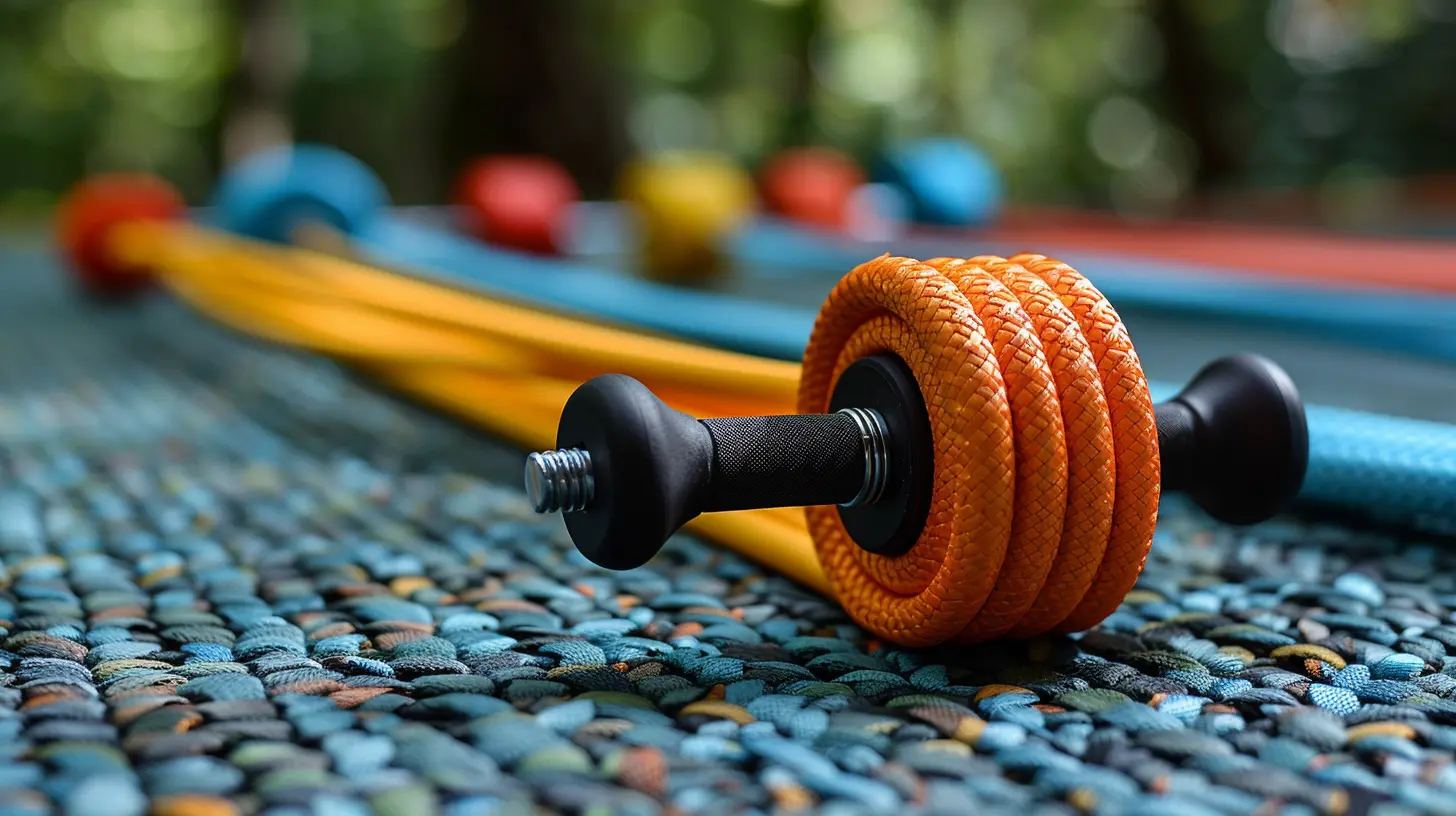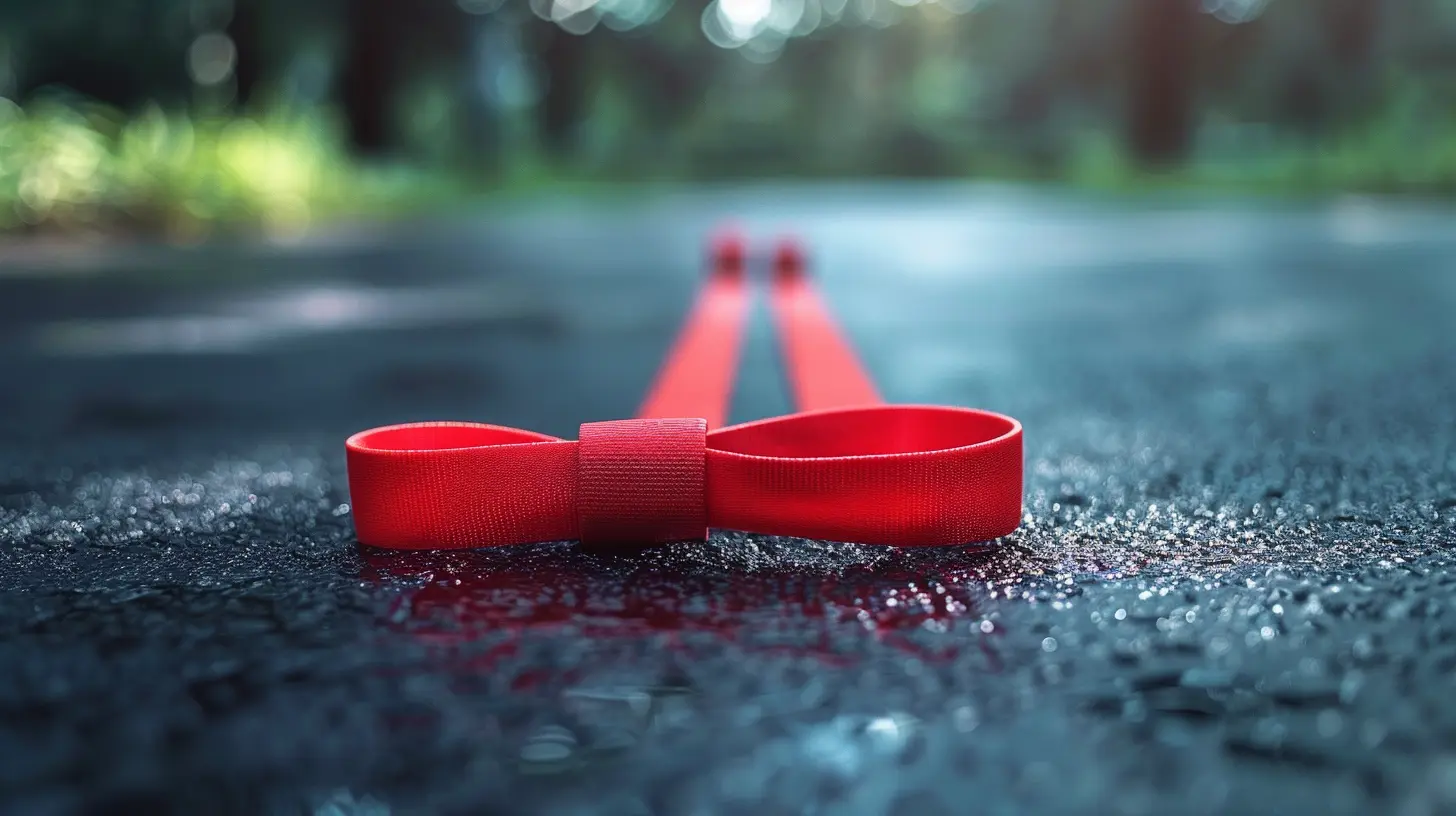Incorporating Resistance Bands into Your Strength Routine
12 July 2025
Let’s face it—strength training can feel overwhelming. Between gym memberships, heavy weights, complicated machines, and time-consuming routines, it’s easy to throw in the towel before you even get started. But what if I told you that you could supercharge your workouts, build muscle, and improve your overall strength with just a stretchy band that fits in your backpack?
Yep, resistance bands aren’t just for physical therapy or warm-ups anymore. They're one of the most underrated tools in fitness. If you’re ready to step up your strength game without breaking the bank (or your back), incorporating resistance bands into your strength routine might just become your favorite fitness hack.

Why Resistance Bands Deserve a Spot in Your Routine
When we talk about resistance bands, we're not just playing around with rubber. These simple tools are power-packed with benefits:- Affordable – You can grab a whole set of bands for less than a month's gym membership.
- Portable – Perfect for home workouts, traveling, or even squeezing in a session at the office.
- Joint-Friendly – Way easier on the joints compared to heavy weights.
- Versatile – Suitable for beginners and advanced lifters alike.
Instead of just lifting weights and calling it a day, adding resistance bands can awaken your muscles in ways that dumbbells often miss. Think of bands as your workout's secret spice—they add flavor, variety, and a surprising kick.

What Are Resistance Bands, Really?
If you’re visualizing a glorified rubber band from your desk drawer, let's clear that up. Resistance bands are thick, elastic bands made from strong, stretchy material designed to provide resistance during movement. They come in various shapes and sizes, like:- Loop Bands – Think giant rubber bands. Great for lower-body work.
- Tube Bands with Handles – These mimic traditional gym equipment for upper-body exercises.
- Flat Bands – Ideal for stretching and rehab exercises.
- Figure-8 Bands – Shorter and shaped like—you guessed it—a figure 8.
Each type has its purpose, so depending on your goals, it’s worth trying a few out until you find your groove.

Benefit Breakdown: Why You’ll Love Training with Bands
1. Consistent Resistance Across the Move
Unlike free weights, which can feel heavier or lighter depending on your angle (thanks, gravity), resistance bands provide constant tension. Whether you’re curling, pressing, or squatting, your muscles are working through the entire movement.This constant resistance helps build strength, improve muscle tone, and increase endurance in ways weights can’t match.
2. Activate Stabilizer Muscles
Ever try a banded squat and realize muscles you never noticed before were burning? That’s the magic. Bands force your body to stabilize, balance, and engage those often-ignored muscles. Over time, that leads to better posture, injury prevention, and a stronger core.3. Perfect for Progressive Overload
You don’t need to buy heavier dumbbells every month. With bands, you can easily scale up your resistance by adding more bands, shortening the range, or increasing reps. Simple and effective.
Getting Started: How to Use Resistance Bands in Your Strength Training
So now that you’re sold on the benefits, where do you start? Here’s how to smoothly blend resistance bands into your usual strength routine.Step 1: Pick the Right Band for the Right Job
Each exercise targets different muscle groups, and the resistance level you need will vary.- Light Bands – Great for shoulder work, warm-ups, or mobility drills.
- Medium Bands – Use them for exercises like bicep curls, tricep extensions, and rows.
- Heavy Bands – Perfect for squats, deadlifts, or glute bridges.
Remember, it’s not about ego—form and full range of motion matter way more than brute strength.
Step 2: Warm Up Like a Pro
Before diving into your main sets, use light bands to warm up your muscles. Activation exercises like banded leg swings, shoulder openers, or monster walks get your blood flowing and muscles fired up. Plus, they reduce your risk of injury.Step 3: Add Bands to Compound Moves
This is where things get spicy. You can pair resistance bands with bodyweight exercises or even free weights for added challenge.Here’s how:
- Banded Push-Ups – Loop a band around your back and hold both ends under your palms. That extra tension at the top? Brutal in the best way.
- Banded Squats – Step on a band and loop it behind your shoulders. You'll feel the burn intensify as you stand.
- Deadlifts with Bands – Wrap a heavy band around your feet and hold the ends. It's like gravity turned up a notch.
Step 4: Isolate and Burn Out
Use bands at the end of your workout to isolate and finish off muscle groups. Think bicep curls, lateral raises, glute kickbacks, or tricep extensions. The burn is real, and your muscles will scream (in a good way).Sample Resistance Band Strength Routine
Let’s walk through a full-body routine using resistance bands only. This one’s great for at-home workouts or traveling.🔥 Total Body Resistance Band Workout (3 Rounds)
1. Banded Squats – 15 reps2. Resistance Band Rows – 12 reps each side
3. Banded Push-Ups – 10-12 reps
4. Glute Kickbacks – 12 reps each leg
5. Banded Shoulder Press – 12 reps
6. Bicep Curls – 15 reps
7. Tricep Extensions – 12 reps
Rest 30–60 seconds between exercises. Repeat 3 times for a killer strength session.
Training Tips to Maximize Your Gains
- Focus on Time Under Tension: Move slowly and with control. That constant band tension works best when you resist the urge to rush.- Mix It Up: Switch band levels, angles, or hand positions to avoid plateaus.
- Check for Wear and Tear: Inspect your bands often—nobody wants a snap mid-set.
- Anchor Properly: Door frames or heavy furniture work great for securing bands, just make sure it’s stable!
Combine Bands with Weights for Supercharged Strength
Guess what? You don’t have to choose between weights and bands. Using both together boosts gains like rocket fuel.For example:
- Adding bands to barbell squats increases resistance at the top of the movement, where you’re strongest.
- Pairing dumbbells with bands during curls or presses adds a new layer of challenge.
Think of it as lifting smarter, not harder.
Who Should Be Using Resistance Bands?
Spoiler alert: pretty much everyone.- Beginners – Build foundational strength without feeling intimidated.
- Athletes – Improve explosive power and mobility.
- Lifters Hitting Plateaus – Add variety and overcome stagnation.
- Seniors & Rehab Clients – Gentle on the joints while building strength.
- Busy Folks – No gym needed, just grab a band and go.
No matter your fitness level, resistance bands are one of the most adaptable tools around.
Busting Myths About Resistance Bands
Let’s clear up a few things, shall we?- ❌ _“They’re only for beginners.”_
✅ Resistance bands challenge even seasoned lifters.
- ❌ _“You can’t build real muscle with bands.”_
✅ Oh yes, you can. With progressive overload, consistency, and the right plan, muscle growth is 100% on the table.
- ❌ _“Bands break too easily.”_
✅ Quality matters. Invest in good ones, treat 'em well, and they'll last years.
The Bottom Line
Incorporating resistance bands into your strength routine is like adding a multi-tool to your workout toolbox. They’re lightweight, low-cost, and endlessly versatile. Whether you want to tone your arms, sculpt your glutes, or just switch things up, these stretchy powerhouses can get you there.So next time you're thinking about skipping your workout because you're short on space, equipment, or time, just grab a resistance band. It might look simple—but don’t let it fool you. With consistency and effort, it might just become your new favorite fitness weapon.
all images in this post were generated using AI tools
Category:
Strength TrainingAuthor:

Tiffany Foster
Discussion
rate this article
2 comments
Kristina Benson
Embrace the stretch, let tension weave, In bands of color, strength we conceive. With each rep, resilience grows, A dance of power, as wellness flows.
November 28, 2025 at 4:16 PM
Taylor McHugh
Great article! I appreciate the insights on incorporating resistance bands into strength training. They offer versatility and accessibility for all fitness levels. I’m excited to try some of these exercises in my routine. Thank you!
July 23, 2025 at 3:43 PM

Tiffany Foster
Thank you! I'm glad you found the article helpful and that you're excited to try the exercises. Happy training!


